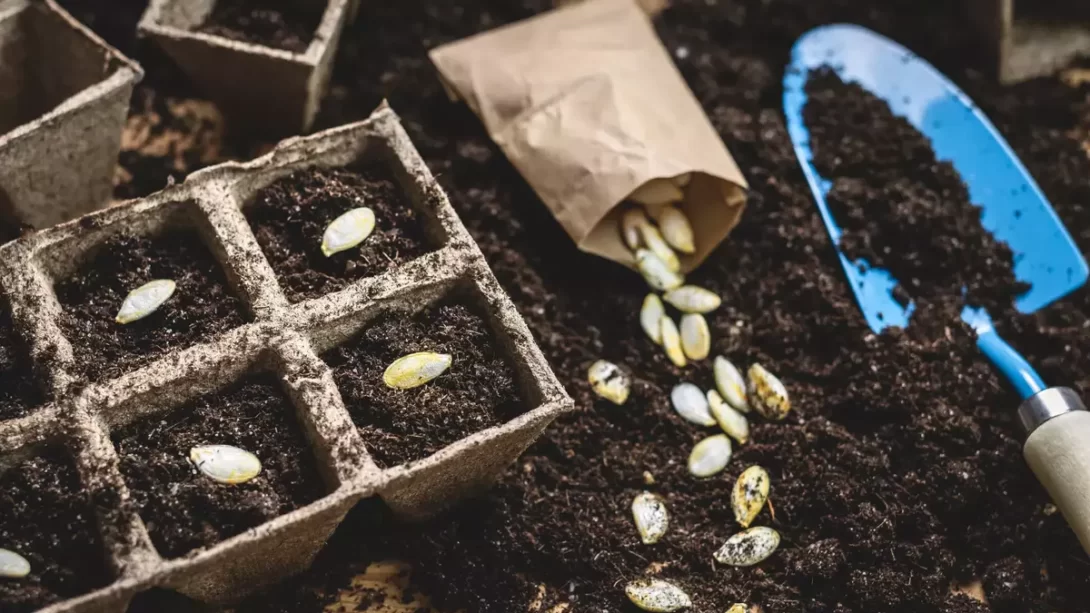Pumpkin cultivation is a cherished autumn tradition, and in Georgia, the warm climate provides an excellent opportunity for growing these iconic fall fruits. This article is designed to guide gardeners in Georgia through the optimal timing for planting pumpkins, ensuring a successful harvest in time for Halloween and fall festivities.
Georgia’s Climate
Georgia’s climate is characterized by hot summers and mild winters, which can vary across different regions of the state. This climate is generally conducive to pumpkin growing, but understanding the local weather patterns is crucial. The state’s long growing season is advantageous, but the timing of planting must be carefully considered to align the pumpkin harvest with autumn events.
Ideal Planting Time for Pumpkins in Georgia
The key to a timely pumpkin harvest is planting at the right time. In Georgia, the ideal planting time is typically:
- Northern and Central Georgia: Planting is best done from late May to early July. This timing ensures that pumpkins have enough time to mature before the first frost, typically in late October or early November.
- Southern Georgia: Gardeners in these warmer regions can plant a bit earlier, usually from early to mid-May. The earlier planting takes advantage of the longer growing season in the southern part of the state.
It’s essential to count backward from the desired harvest time, considering that most pumpkin varieties take between 90 to 120 days to mature.
Factors Influencing Planting Time
Several factors play a role in determining the best time to plant pumpkins in Georgia:
- Soil Temperature: Pumpkins require warm soil for germination, ideally between 70°F and 95°F. Planting should occur when the soil has consistently reached these temperatures.
- Last Frost Dates: It’s important to plant after the danger of the last spring frost has passed. Frost can damage or kill young pumpkin plants.
- Growing Cycle and Harvest Goals: If the goal is to have pumpkins for Halloween, count backward from October 31st to determine the planting date, considering the specific variety’s maturation time.
Preparing for Planting
Successful pumpkin cultivation starts with proper preparation. Here are some essential steps for gardeners in Georgia:
- Soil Preparation: Pumpkins prefer well-drained, nutrient-rich soil. Prepare your planting beds by incorporating plenty of organic matter like compost or well-rotted manure. This will help improve soil fertility and drainage.
- Selecting Pumpkin Varieties: Choose pumpkin varieties that are well-suited to Georgia’s climate. Consider the size and type of pumpkins you want, from small decorative varieties to larger types for carving. Some popular choices include ‘Connecticut Field’, ‘Small Sugar’, and ‘Lumina’ for white pumpkins.
Planting and Growing Process
After preparing your garden, follow these steps for planting and growing pumpkins:
- Planting Depth and Spacing: Plant pumpkin seeds 1 inch deep in the soil. Space hills about 4 to 8 feet apart, with 2 to 3 seeds per hill. After germination, thin out the seedlings, leaving the strongest plant in each hill.
- Watering: Pumpkins require consistent moisture for healthy growth. Water the plants deeply, especially during dry spells. Avoid overhead watering to reduce the risk of leaf diseases.
- Fertilizing: Use a balanced fertilizer at the time of planting. As the plants grow, side-dress with a nitrogen-rich fertilizer to encourage lush vines.
- Pest and Disease Control: Keep an eye out for common pumpkin pests like squash bugs and cucumber beetles. Use appropriate pest control methods and practice crop rotation to minimize disease issues.
Common Challenges and Solutions
Growing pumpkins in Georgia can come with its set of challenges:
- Pests and Diseases: Pests such as squash vine borers and diseases like powdery mildew can affect pumpkin plants. Regular monitoring, using organic or chemical control methods, and maintaining healthy soil can help manage these problems.
- Weather Conditions: Sudden weather changes in Georgia, like heavy rain or drought, can impact pumpkin growth. Using mulch can help regulate soil moisture and temperature, protecting the plants.
Harvesting and Post-Harvest Care
As the growing season progresses, it’s important to know when your pumpkins are ready to be harvested:
- Harvest Timing: Pumpkins are usually ready for harvest when they have reached the desired size and the rind has turned a deep, solid color (usually orange). The rind should be hard, and the pumpkin should sound hollow when tapped. Additionally, the stem will start to dry and turn brown.
- How to Harvest: Use pruning shears or a sharp knife to cut the pumpkin from the vine, leaving several inches of stem attached. This not only helps in preserving the pumpkin but also prevents rot.
- Curing Pumpkins: After harvesting, cure the pumpkins in a warm, dry place for about a week. This process hardens the skin, heals any cuts, and improves the storage life.
- Storage: Store cured pumpkins in a cool, dry place. Properly stored, pumpkins can last for several months.
Common Challenges and Solutions
Growing pumpkins in Georgia may present challenges like extreme weather conditions and pest infestations:
- Managing Pests and Diseases: Stay vigilant for signs of pests and diseases throughout the growing season. Implement integrated pest management practices, including crop rotation, using row covers, and applying organic or chemical treatments when necessary.
- Weather Adaptations: In case of unexpected weather changes, such as a sudden rainstorm or a dry spell, take steps to protect your pumpkin plants. This might include providing extra water during droughts or drainage solutions for excessive rain.
Conclusion
Planting pumpkins in Georgia can be a rewarding experience, with the state’s climate offering a conducive environment for growing these popular fall fruits. By understanding the optimal planting times, preparing the soil correctly, and choosing suitable varieties, gardeners can look forward to a successful pumpkin harvest. Paying attention to the growth and health of the plants throughout the season, and following the right techniques for harvesting and storage, are essential steps in enjoying the fruits of your labor.
With these guidelines, you can anticipate harvesting vibrant, healthy pumpkins ready for carving, cooking, or decorating during the autumn season. Whether you’re a seasoned gardener or a beginner, growing pumpkins can add fun and fulfillment to your gardening endeavors in Georgia.




